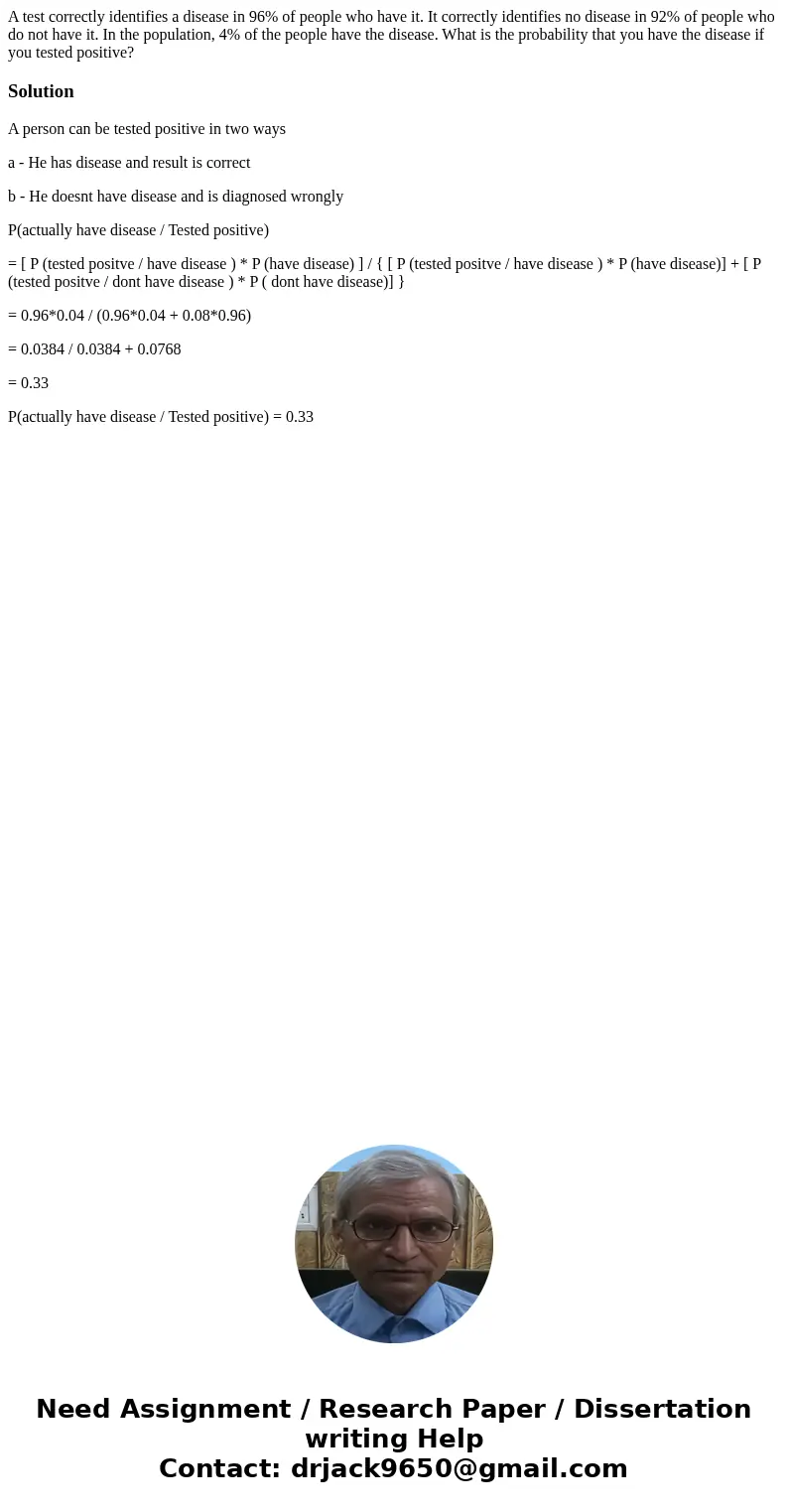A test correctly identifies a disease in 96 of people who ha
A test correctly identifies a disease in 96% of people who have it. It correctly identifies no disease in 92% of people who do not have it. In the population, 4% of the people have the disease. What is the probability that you have the disease if you tested positive?
Solution
A person can be tested positive in two ways
a - He has disease and result is correct
b - He doesnt have disease and is diagnosed wrongly
P(actually have disease / Tested positive)
= [ P (tested positve / have disease ) * P (have disease) ] / { [ P (tested positve / have disease ) * P (have disease)] + [ P (tested positve / dont have disease ) * P ( dont have disease)] }
= 0.96*0.04 / (0.96*0.04 + 0.08*0.96)
= 0.0384 / 0.0384 + 0.0768
= 0.33
P(actually have disease / Tested positive) = 0.33

 Homework Sourse
Homework Sourse